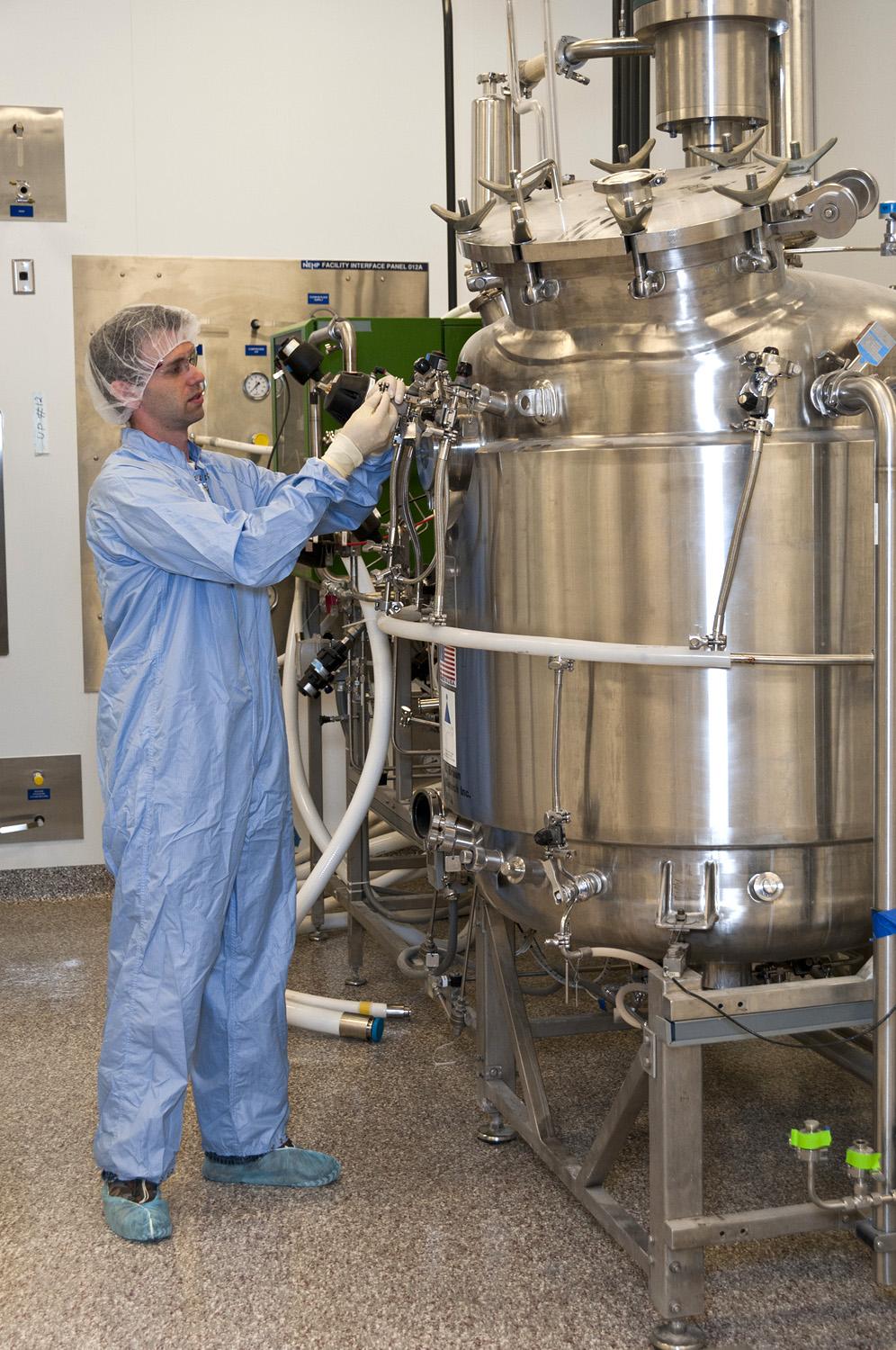By Ken Michaels, Staff Writer
The Biopharmaceutical Development Program (BDP) at the Frederick National Laboratory is, for the first time ever, in a single building at the Advanced Technology Research Facility (ATRF).
At Fort Detrick, BDP operations were spread out in about a dozen buildings, resulting in redundancies in maintaining various utilities (air handlers, clean steam, WFI, etc.) for multiple buildings rather than one.
BDP’s space at the ATRF is purpose-built for developing and manufacturing biopharmaceuticals for toxicology studies and Phase I and II clinical trials. These areas are primarily clean room spaces operated in accordance with current Good Manufacturing Practices (cGMPs) and the utilities and support areas required for cGMP compliance.
Another important aspect of bringing the program together is that all of BDP’s production trains are in the same location.
A production train includes the equipment and facilities needed to manufacture a single product from start to finish. BDP has three distinct GMP production trains: one bacterial with a maximum capacity of 500 liters, one cell culture with a maximum capacity of 1,000 liters, and one viral or Biosafety Level 3 with a maximum capacity of approximately 20 liters.
BDP also has three more production trains in the smaller-scale areas: one bacterial with a capacity of 100 liters, one cell culture with a capacity of 75 liters, and one viral with the capacity of about 5 liters. Materials manufactured in these areas are for non-clinical and potentially very early clinical use.
“The BDP facilities are a unique resource for NCI, providing in-house manufacturing capabilities that would otherwise require outsourcing,” said John Roach, Late Process Science director, BDP. Outsourcing could cause potential delays in getting promising therapies to the clinic to be evaluated quickly and efficiently.
The partnership space at the ATRF provides BDP with the opportunity for potential partnerships with organizations that could take over the manufacture of promising therapies as products move through Phase II clinical trials and beyond. Other opportunities might include collaborations with entities that are developing new manufacturing technologies. “BDP might utilize these new technologies to facilitate manufacture of a particular product while a partner would have the opportunity to apply its new technologies in a larger-scale setting,” Roach said.
BDP’s space at the ATRF gives the group the additional capacity to produce non-clinical or Phase 0 clinical materials. BDP can also more easily segregate processes and product change-over.
BDP already collaborates with Advanced Technology Program (ATP) laboratories, and the closer proximity of the two groups at the ATRF “will foster an environment for an even greater degree of collaboration,” Roach said.
Although BDP moved into the ATRF in early August, the majority of its GMP production component will remain at Fort Detrick through the end of 2012. During that time, the ATRF will be undergoing a variety of validation activities. BDP expects to have non-GMP production up and running before the end of 2012, and GMP production by the first quarter of 2013.


